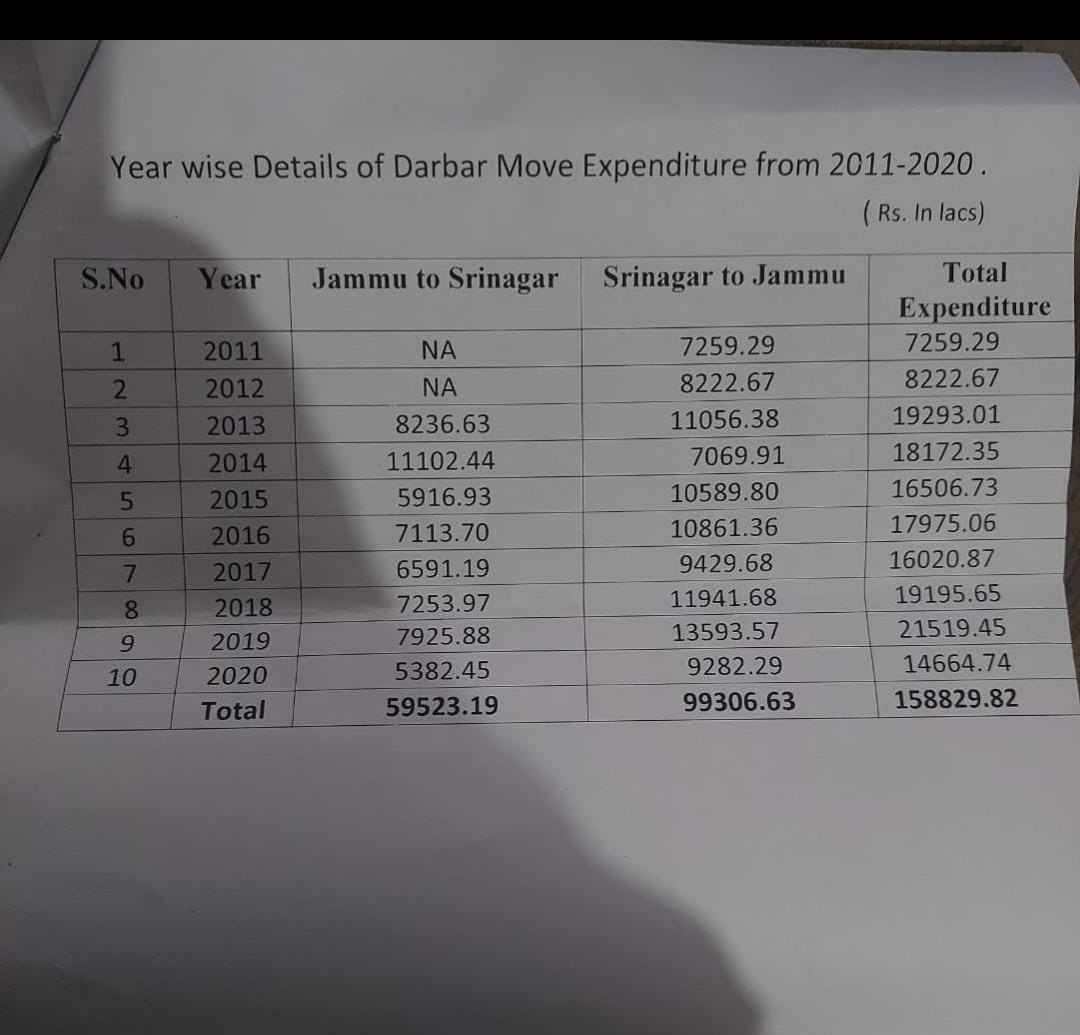SRINAGAR: In 1872, Maharaja Ranbir Singh initiated the Darbar Move in Jammu and Kashmir, a practice involving the biannual relocation of the capital between Srinagar and Jammu due to the diverse climates in these regions. While the tradition aimed to familiarize the administration with both areas, it came at a substantial economic cost, hindering growth and disrupting governance.
The financial burden of the Darbar Move was evident in the expenses incurred during the shifts. The costs, ranging from 2011 to 2020, totaled a staggering 158829.82 lacs. Despite recognizing the adverse effects on governance and the economy, successive governments hesitated to abandon the practice due to its political significance in both regions.
Efforts to reform the tradition faced resistance. In 1957, Bakshi Ghulam Mohammad’s attempt to establish a permanent presence for some government offices in Srinagar was met with opposition, leading to the abandonment of the reform. In 1987, Farooq Abdullah aimed to control costs by stationing permanent Civil Secretariat offices in Srinagar, facing backlash and eventually withdrawing the decision under public pressure.

In March 2021, the government transitioned to e-office software, costing Rs 67.62 crore, marking the end of the Darbar Move tradition. The move to digitization aimed to streamline administrative processes and eliminate the need for physical relocations. Despite demands for digitization predating the Union Territory status of Jammu and Kashmir, the reform took time to materialize.
The digitization initiative gained urgency after incidents like a fire in July 2013, destroying hundreds of files, and the devastating flood in September 2014, which emphasized the need to safeguard official records. However, practical implementation lagged behind announcements.
Former Chairperson of J&K Public Service Commission Mohammad Shafi Pandit praised the move to e-governance, emphasizing its positive impact on accountability and transparency. Retired IAS officer Kifayat Hussain Rizvi acknowledged the validity of arguments against the Darbar Move’s financial burden but noted the importance of officers’ physical presence for efficient administration.
Professor Pirzada Mohd Amin highlighted the Dogra legacy behind the Darbar Move, rooted in climatic challenges. While the tradition once fostered integration and regional balance, technological advances and improved connectivity rendered it obsolete.
In June 2021, LG Manoj Sinha declared the conclusive end of the Darbar Move tradition, as both UT regions maintained year-round Civil Secretariats. The move was a significant step toward efficient governance, acknowledging the changing times and the need for modernization.
The Darbar Move discontinuation has not only saved Jammu and Kashmir’s treasury by Rs 200 crore annually but also marked a crucial shift toward embracing technological solutions for governance. The move reflects a commitment to streamline administrative processes, improve efficiency, and allocate resources more effectively. As Jammu and Kashmir adapts to the era of e-governance, it opens new possibilities for accountable and transparent administration, ensuring that the lessons learned from historical practices contribute to a more progressive and resilient future.










